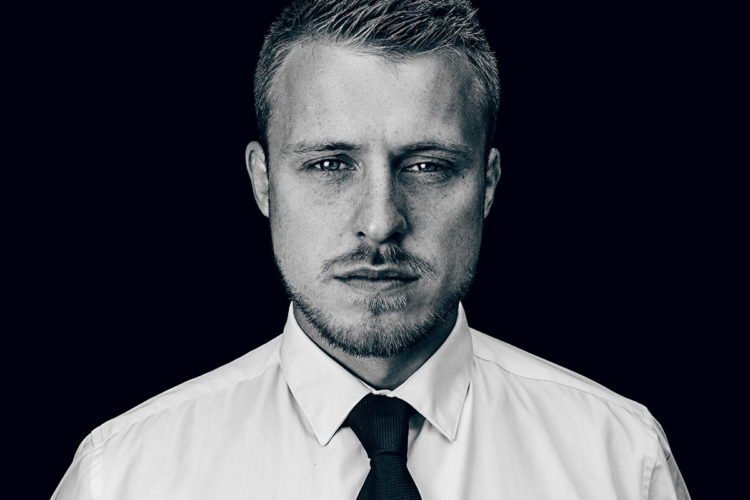A massive hello from the UK and thank you to both Scott & Brad for allowing me to write this week’s guest blog.
When thinking about the topic to write for this blog, I instantly wanted to write about the retouching industry. Having been working as a retoucher for nearly 5 years I’ve noticed that it isn’t talked about enough. Retouching is a very specialist field within the photography industry. Unless you are lucky enough to live in major cities like London or New York, the jobs are very few and far between. That’s why it’s important to understand and be absolutely committed to your decision to be a retoucher.
So what does it take to be a retoucher?
Know Your Software
This may be pretty obvious, but you must know Photoshop. 90% of major studios use Photoshop, and the other 10% use Lightroom. These may be smaller outlets or perhaps working for a freelance photographer. It’s good to know Lightroom, but the majority of the time you will be using Photoshop. Photoshop gives you more control and allows you to do a lot more to your images.
You may think, “Well I use Lightroom so I’ll be fine with that.” For your own photography that might be fine, but working in a studio environment may be a lot different. It also depends on what retouching industry you’re going into. If you want to work for a powerhouse who creates editorial and fashion content for a major brand, Photoshop is essential. If you work for a photographer who shoots weddings or family portraiture, they may only need minor tweaks made, which could be done in Lightroom.
If you’re thinking about going into retouching, it’s good practise to do your research and find what styles of images you enjoy, to determine what software is essential for you. However, I would always say learn Photoshop as much as you can.
Which follows on to my next quick point, learn Photoshop every single day. Be a sponge and take in as many courses, tips and tutorials as you can. [I would highly recommend KelbyOne for classes, and a cheeky plug to my own tutorials for quick Photoshop tips].
It’s always important to continually develop yourself and learn new things which can help your workflow and make things easier and more efficient for you. Learn from books, videos, magazines and even learn from your favourite Photographers and Retouchers. Be smart.
Be Proactive
Don’t let the work come to you. If you’re just starting out in your retouching journey, the best thing you can do is retouch your own images. Take photographs of everything; portraits, landscapes, architecture, food, products, sports, pets, anything. You’ll learn very quickly that some genres of photography require a lot more retouch but it will help you gain the experience and knowledge of what each images requires in terms of retouching. Portraits of models will take a lot longer than a shot of a pet for example. This not only will allow you to understand the tools but will help you figure out how long it’s taking you. I elaborate on time management further into this post.
If you don’t own a camera or you feel you don’t have the experience to take your own images, why not ask a fellow Photographer if you can borrow their images to retouch for your own personal use. You could even use forums like Model Mayhem where Photographers upload their own images for creatives to practice on for their own personal portfolio. It’s a great way of getting experience on professional images. Being proactive is an essential trait to have for a Retoucher.
Network and collaborate on creative projects. Find a Photographer to bounce ideas off and produce a project; something fun for the Photographer, something fun for you. They’ll be able to shoot the product or portrait and you can retouch the image. It’s a great way of building a portfolio with a set of images that involve your own ideas. Get yourself out there.
Patience is Essential
Using Photoshop can be super frustrating; you’ll run into issues you may not be able to figure out, or come across an image that’s going to need hours of work. So my next tip is have patience. Retouching can be a very long winded process, but, you’ll find that once you finish the image, you’ll feel very proud and happy with the end result. This is something that most retouchers love about retouching. Seeing the process from start to finish and knowing that they’ll have a wonderful piece of work at the end of it.
Patience is key when working with Photoshop. It may take several hours to complete one image, so it’s about getting through it and enjoying the journey. You may run into technical issues along the way, whether it’s something you can’t achieve or don’t know how to do. Retouching will give you problems that you have to solve.
You may ask yourself, “How am I going to achieve this?” Use your problem solving skills to figure out the easiest and most efficient way of resolving the issue. If you’re not sure, ask. There are plenty of people around the world who’ll be able to help you with your problem. Once you know how to solve it, you can use that same technique in the future. Eventually you’ll build up a toolbox of knowledge and be able to solve similar issues in the future.
Another great tip is to walk away. If you’re getting stuck with an image or you’ve spent too long on it, come away from it and return to it the following day. You’ll be surprised how much this can help. You’ll have a fresh look on the image and spot things you may have missed or figure out how to solve an issue. If you’re up against the clock, ask someone for feedback. With a fresh pair of eyes, they’ll be able to see any issues and you’ll be able to fix anything within enough time of your deadline.
Be Committed
Dedication is definitely needed when going into the retouching industry. Depending on the kinds of images you’ll be retouching, the industry can get quite monotonous. Especially if you’re working on the same shots day in day out. You have to be committed to the craft and really want it.
Be prepared for images that could potentially consume your time, especially if they take 2-3 hours. Being committed and persistent with the images will be very rewarding, especially when you see your finished pieces on the web or in print. Having the passion for retouching is essential if you want to succeed in the industry. If you get more and more retouching experience under your belt, the commitment will soon show.
Manage your Time
When you start in the retouching industry, you’ll soon figure out that managing your time is essential. You’ll find that some clients’ work will require a 10-minute clean up whilst others may require 2 hours retouch. It’s all about good time keeping and constantly watching the clock; especially when deadlines need to be met. Products and ecommerce, for example, can require anything from 2 to 10 mins per shot (depending on the specification and brief of the job). Portraits and high end fashion may require hours of attention, especially if they are being shot on high end cameras or they have been shot for print. Attention to detail is key here but it’s important to always remember your timings. Most studios are very fast paced, but you’ll pick up speed as you get used to their processes and practises.
Have fun.
By all means, this isn’t an extensive list of the skills and traits that a retoucher must have, but perhaps some of the most important to succeed in the industry. Don’t feel put off by these either; most traits can be learnt, especially the most important trait – learning Photoshop.
My last point, is to simply have fun. Whether you’re just starting out or are thinking of joining the retouching industry, always enjoy what you do. Whether it’s retouching a product shot for web or retouching a billboard for a major fashion label; do your best and enjoy every second.
Get creative, educate yourself, pick up your speed, solve problems, be patient, manage your time, collaborate, have fun.
Thank you for reading!
– Fran Hughes
You can see more of Fran’s work at FrancescaHughes.com and follow her on YouTube, Instagram, and Twitter.











Go Fran!